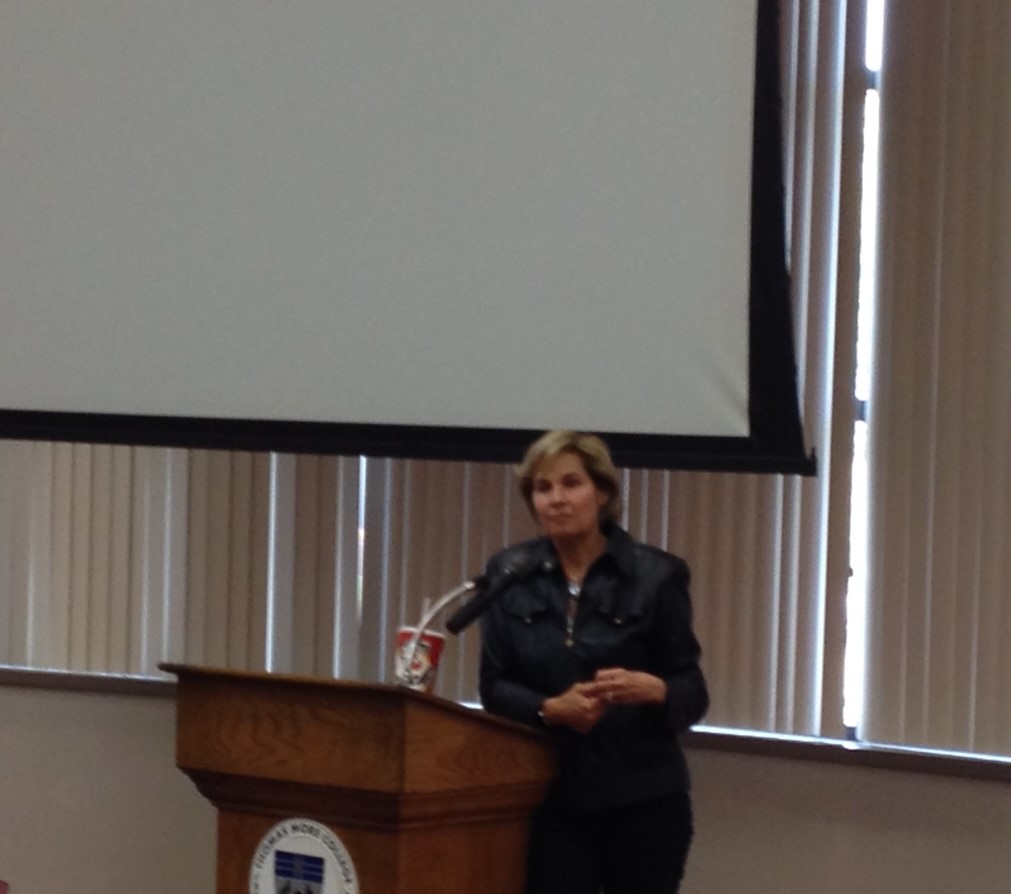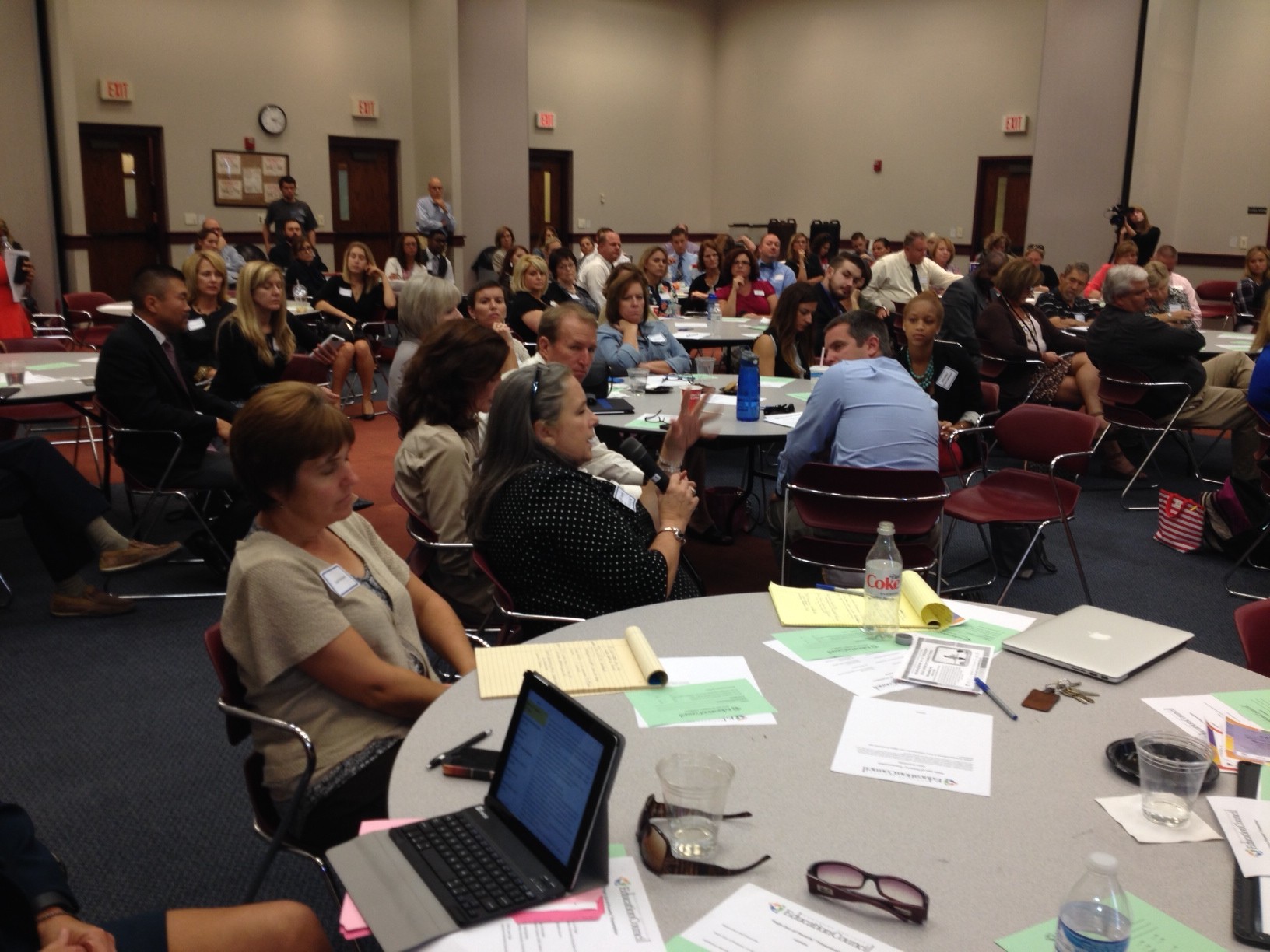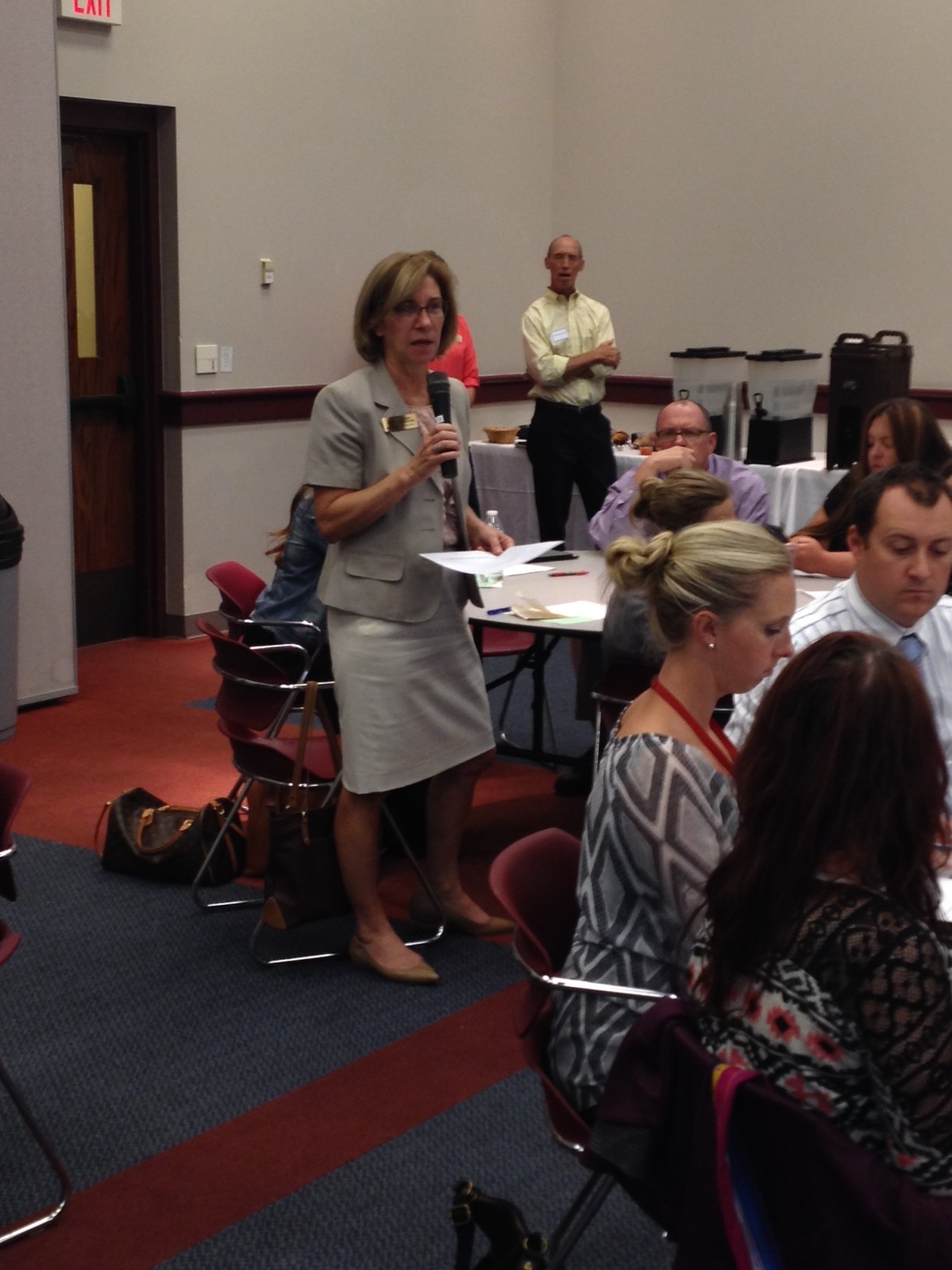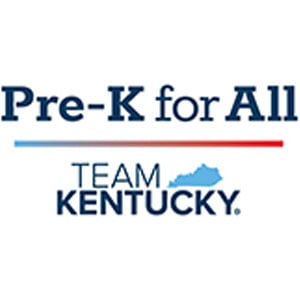By Mark Hansel
NKyTribune managing editor
The Northern Kentucky Education Council “Path Out of Poverty” presentation at Thomas More College helped explain why children from economically disadvantaged families often start school behind classmates and have a hard time catching up.
Dr. Martha Burns, a Fellow of the American Speech-Language-Hearing Association, and an adjunct Associate Professor at Northwestern University, presented recent findings to about 140 educators and community stakeholders Tuesday.

“The real 21st century problem in public education is poverty,” Burns said.
She cited several key points that helped explain the link to poverty and challenges to early learning, including:
* Children raised in poverty are exposed to millions of fewer spoken words at home
* Income level negatively impacts cognitive functions
* There are links between family income and memory and attention
* Poverty is associated with chronic stress which can have a toxic effect on brain architecture
* English Language Learners often have a triple jeopardy – language barrier to learning, history of poverty, learning disabilities
English language learners are people who are learning English in addition to their native language.
Burns said the number of words spoken in the home is directly related to income levels and greatly impacts the ability of children to learn.
In families where the adults are professionals, 45 million words are spoken in the home, compared to 26 million in working-class homes and just 13 million in homes at or below the poverty level.

“Language is what gets the brain architecture to start maturing,” Burns said. “If there is any takeaway from this today, as community activists, you can help people understand the importance of talking to their children. If they can read (to them), that’s wonderful (but) if they can’t read, I’m just as happy if they talk to their children.”
The impact of income levels on cognitive function is most significant in families at or below the poverty line.
Burns said there is very little difference among children with family income of $50,000 and those with significantly higher incomes. Among children at or below the poverty level, however, even a few thousand dollars greatly reduces cognitive skills
“By cognitive functions, I’m not talking about academic skills…I’m talking about underlying capacities that make learning easier, like being able to pay attention in a classroom,” Burns said. “It has nothing to do with intelligence.”
A 2015 study published in Nature Neuroscience found brain structure and income level relationships were most prominent in regions supporting language, reading, executive functions and spatial skills.
Living in poverty also makes it more likely that children will experience toxic stress. Stress is unavoidable, and has the potential to negatively affect the architecture of the developing brain, but is usually manageable if it occurs over limited periods.
Toxic stress, which is caused by strong, frequent or prolonged activation of the body’s stress management system, however, can impact brain development in children.
As a result, children with extreme exposure to toxic stress respond at lower thresholds than other youths and experience anxiety more frequently and for longer periods.
Sustained activation of the stress response system can lead to impairment in learning, memory and the ability to regulate responses to stress.
Burns said it is important for English language learners to be taught at a very early age.
Studies show that learning a second language while the brain is in the developmental stage, she said, allows integration of more than one language. Put more simply, children who learn a second language early can process information simultaneously in either language, but those who learn later must absorb it separately.
This is significant because the number of English Language Learning students more than doubled between 1997 and 2008 and these children often have a higher proportion of unidentified learning disabilities.

Burns credited the Northern Kentucky community for being ahead of the curve in recognizing the correlation between poverty and challenges to learning.
“I don’t think most school districts, or even regions of the country are as advanced as you are in understanding this and are as far along as you are in understanding this,” Burns said. It’s not as though student poverty is stabilized where we really managed it.”
In fact, just the opposite appears to be true.
Citing a Washington Post story from 2013, Burns pointed out that in 2000 half of the student body was eligible for free or reduced meals, an indication of living in poverty, in just four states. Eleven years later, 17 states, including all but two Southern states had at least 50 percent of students living in poverty.
Boone County Schools Superintendent Randy Poe said being willing to admit that poverty exists, even in what is perceived as an affluent county, is critical.
There is poverty all across Kentucky and a lot of people just think of it as being in the urban cores,” Poe said. “What they don’t realize that in Boone County, more than 40 percent of our students come from economically disadvantaged families.
Poe pointed out that there are schools in Boone County that sit at the 90 percent poverty level and some at the other end of the spectrum, with just 10 percent of the students considered to be poor.
“Even with the 10 percent schools, that could be 100 students and we need to be working to narrow that achievement gap,” Poe said. “That’s why it’s very encouraging that so many members of the community have come out to learn about the opportunities that we have to overcome the challenges of poverty.”
Dr. Julie Metzger Aubuchon, a Florence optometrist and city council member said the presentation highlighted “what we know and what we don’t know.”
“As an eye doctor I am scientifically-based, so if you tell me something I want to see a study that supports it,” Metzger Aubuchon said. “Everything that was discussed today was backed by a study and it’s all relevant research. It provides a good base to help us determine how we need to be driving our outreach efforts among children who are at the poverty level, and really all students.”
The Northern Kentucky Education Council is focused on the alignment of education initiatives in Northern Kentucky. The Council serves as a catalyst for collaboration, change, and progress toward regional educational goals.
Contact Mark Hansel at mark.hansel@nkytrib.com





















